Re-labeling ImageNet: from Single to Multi-Labels, from Global to Localized Labels
动机
- label noise
- single-label benchmark
- but contains multiple classes in one sample
- a random crop may contain an entirely different object from the gt label
- exhaustive multi-label annotations per image is too cost
- mismatch
- researches refine the validation set with multi-labels
- propose new multi-label evaluation metrics
- 但是造成数据集的mismatch
- we propose
- re-label
- use a strong image classifier trained on extra source of data to generate the multi-labels
- use pixel-wise multi-label predictions before GAP:addtional location-specific supervision
- then trained on re-labeled samples
- further boost with CutMix
- from single to multi-labels:多标签
from global to localized:dense prediction map
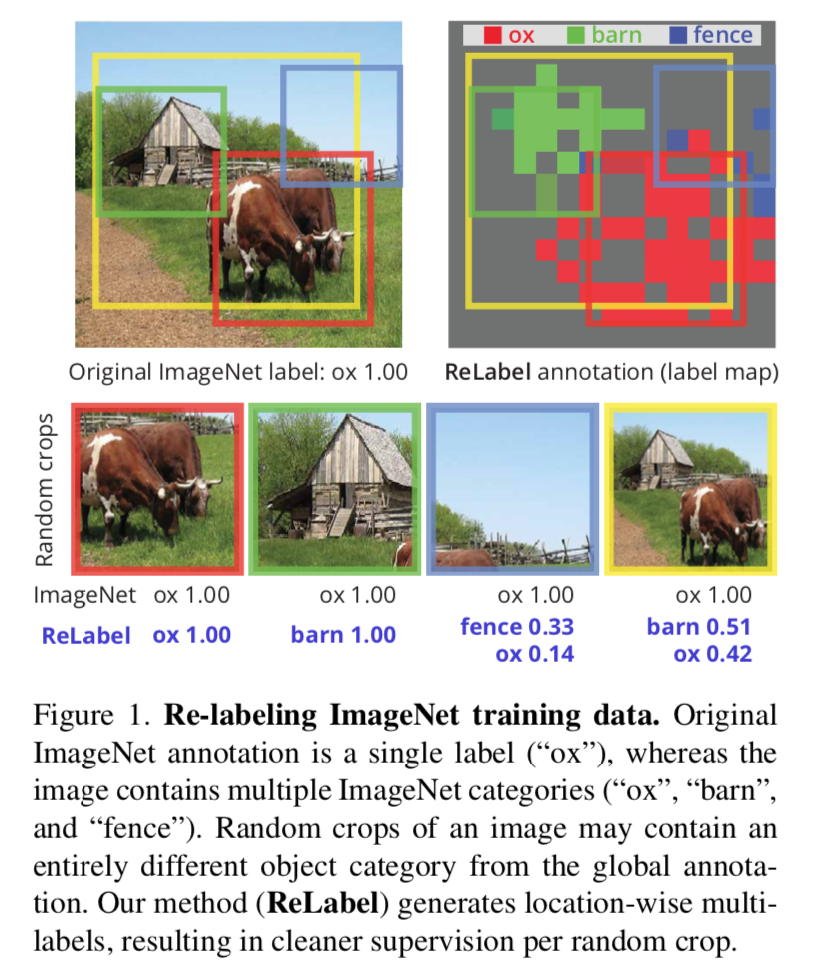
- label noise
论点
- single-label
- 和multi-label validation set的mismatch
- random crop augmentation加剧了问题
- 除了多目标还有前背景,只有23%的random crops IOU>0.5
- ideally label
- the full set of classes——multi-label
- where each objects——localized label
- results in a dense pixel labeling $L\in \{0,1\}^{HWC}$
we propose a re-labeling strategy
- ReLabel
- strong classifier
- external training data
- generate feature map predictions
- LabelPooling
- with dense labels & random crop
- pooling the label scores from crop region
- ReLabel
evaluations
- baseline r50:77.5%
- r50 + ReLabel:78.9%
- r50 + ReLabel + CutMix:80.2%
【QUESTION】同样是引入外部数据实现无痛长点,与noisy student的区别/好坏???
目前论文提到的就只有efficiency,ReLabel是one-time cost的,知识蒸馏是iterative&on-the-fly的
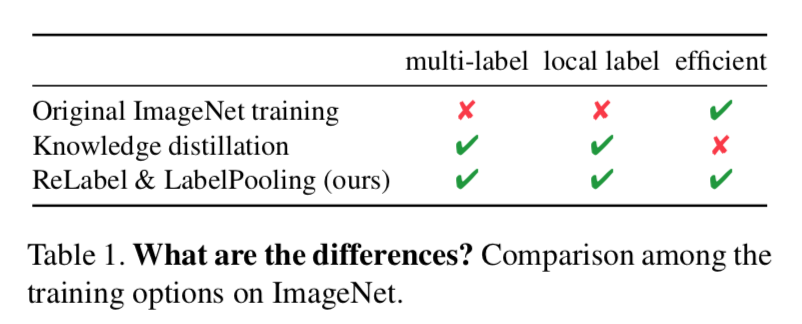
- single-label
方法
Re-labeling
super annotator
- state-of-the-art classifier
- trained on super large dataset
- fine-tuned on ImageNet
- and predict ImageNet labels
we use open-source trained weights as annotators
- though trained with single-label supervision
- still tend to make multi-label predictions
- EfficientNet-L2
- input size 475
- feature map size 15x15x5504
output dense label size 15x15x1000
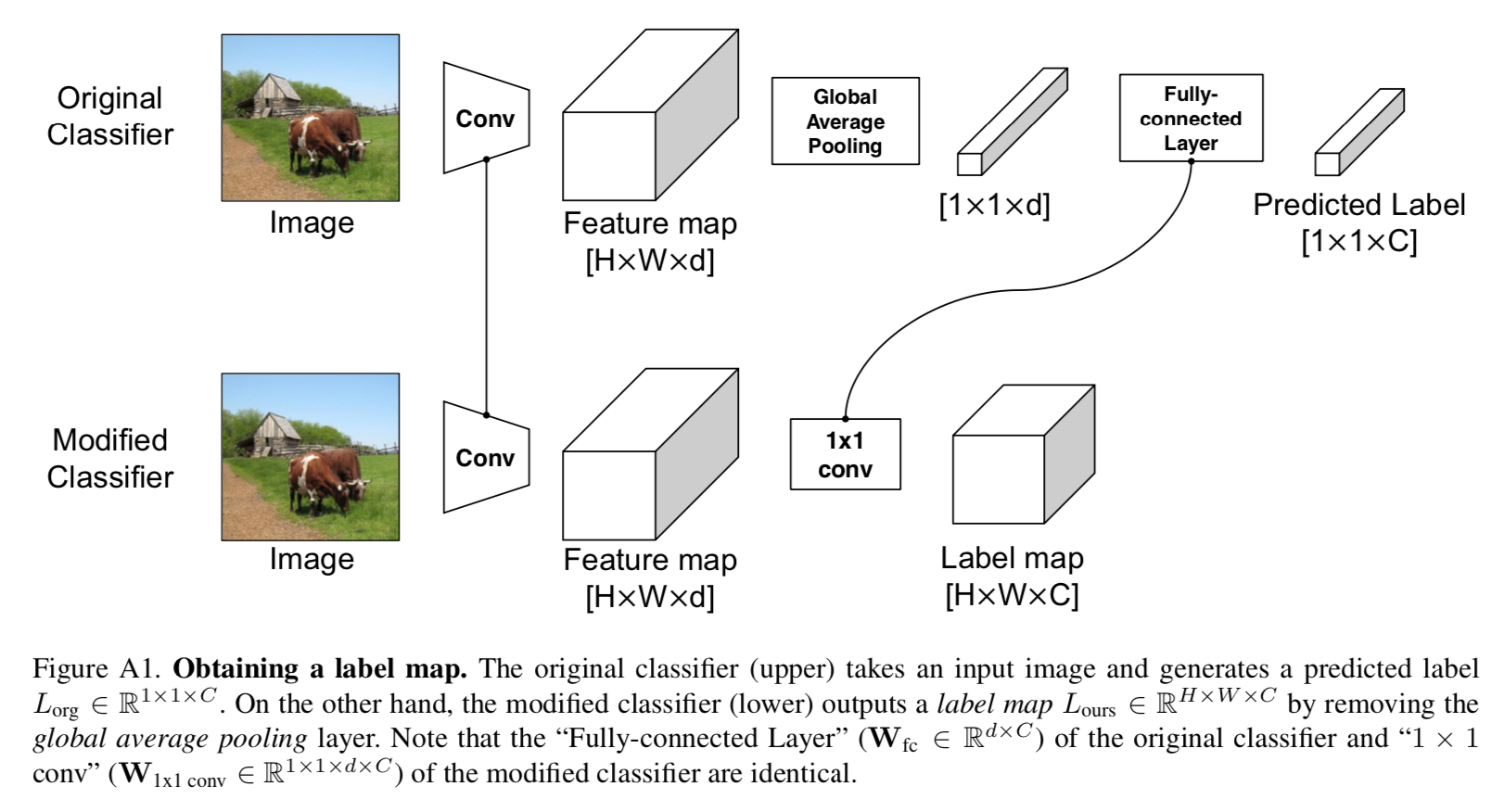
location-specific labels
- remove GAP heads
- add a 1x1 conv
- 说白了就是一个fcn
- original classifier的fc层权重与新添加的1x1 conv层的权重是一样的
label的每个channel对应了一个类别的heatmap,可以看到disjointly located at each object’s position
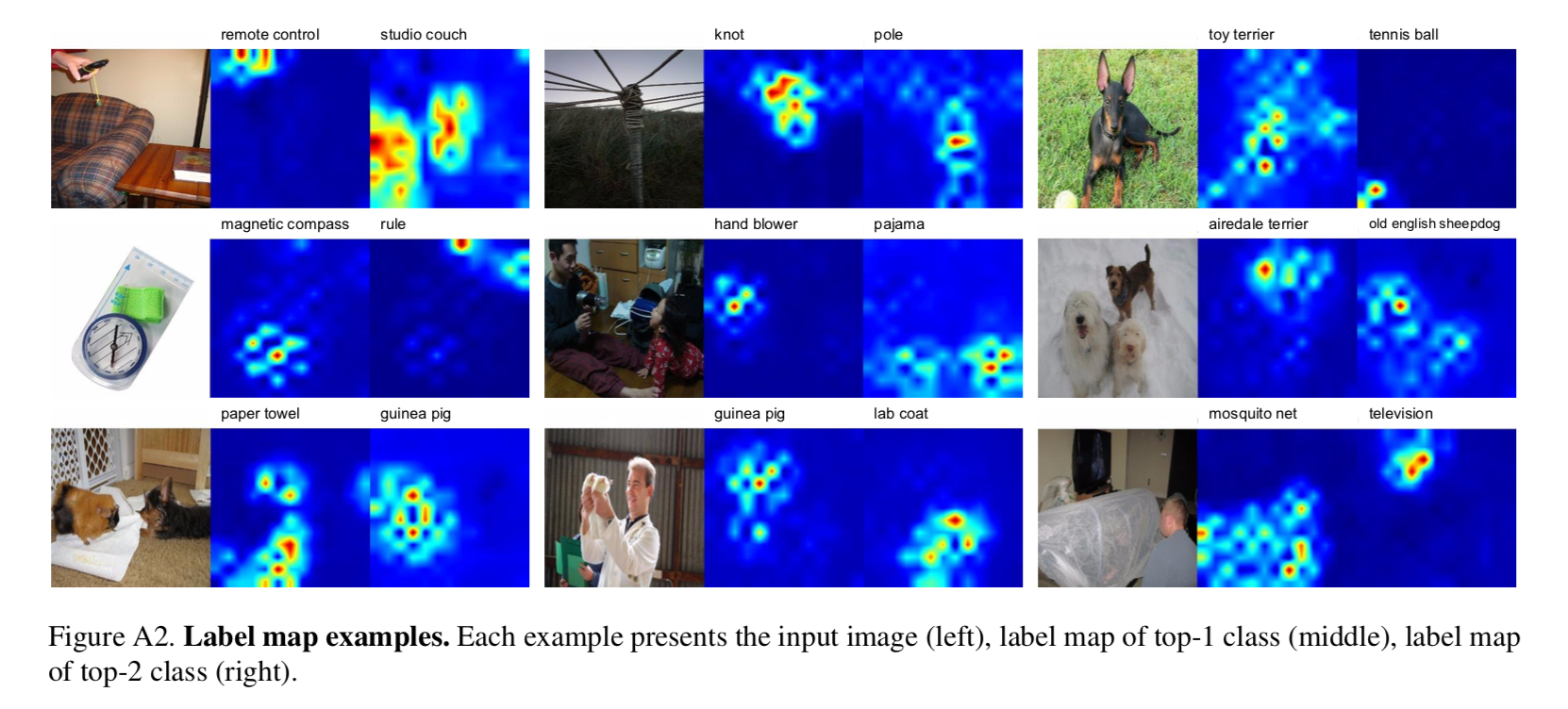
LabelPooling

- loads the pre-computed label map
- region pooling (RoIAlign) on the label map
- GAP + softmax to get multi-label vector
- train a classifier with the multi-label vector
uses CE

choices
space consumption
- 主要是存储label map的空间
- store only top-5 predictions per image:10GB
time consumption
- 主要是说生成label map的one-shot-inference time和labelPooling引入的额外计算时间
- relabeling:10-GPU hours
- labelPooling:0.5% additiona training time
- more efficient than KD
annotators
标注工具哪家强:目前看下来eff-L2的supervision效果最强
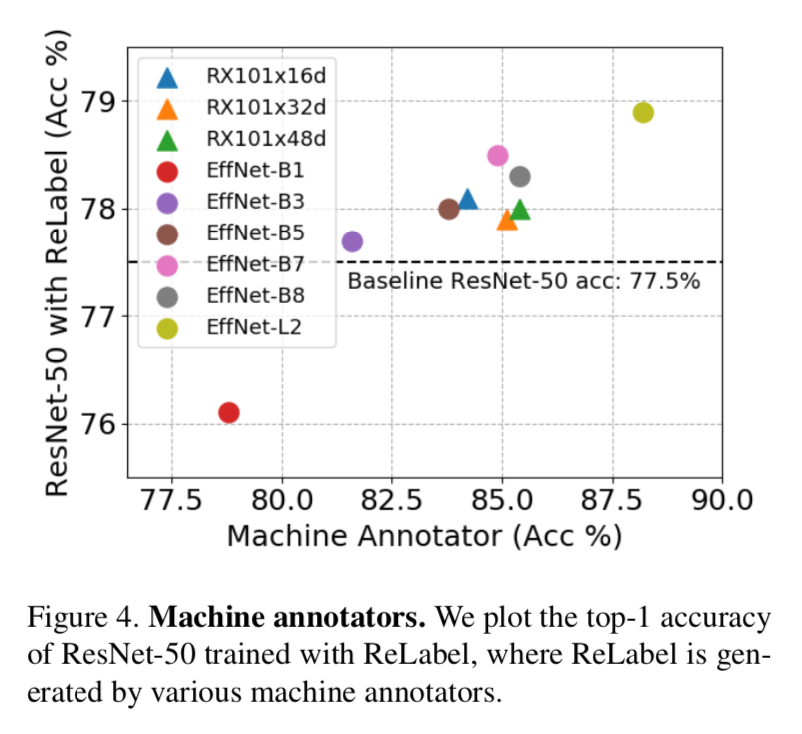
supervision confidence
- 随着image crop与前景物体的IOU增大,confidence逐渐增加
说明supervision provides some uncertainty when low IOU
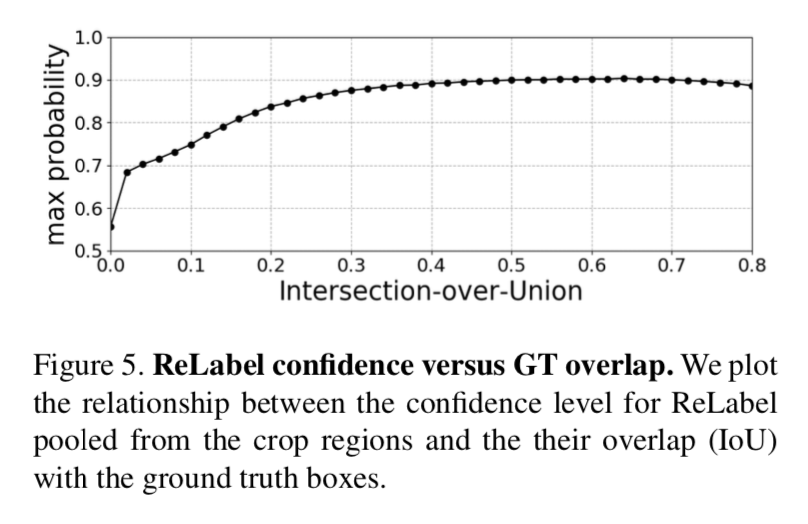
实验